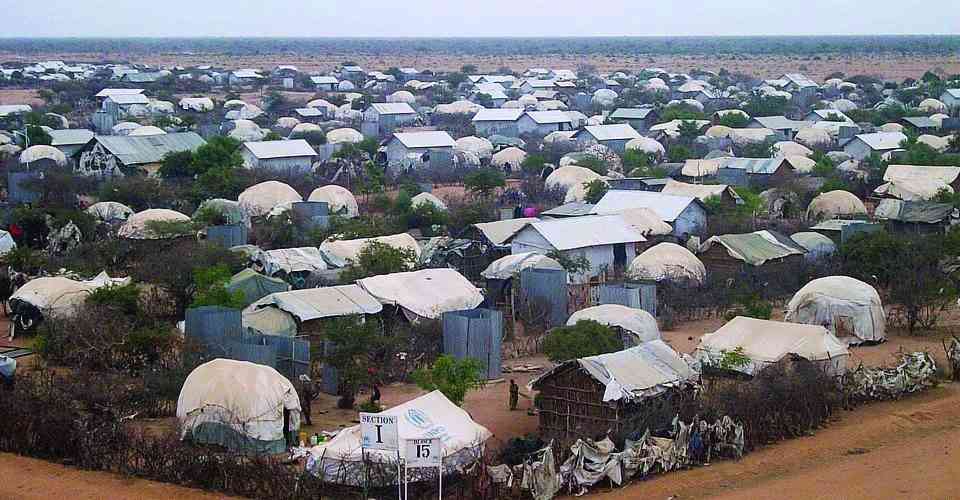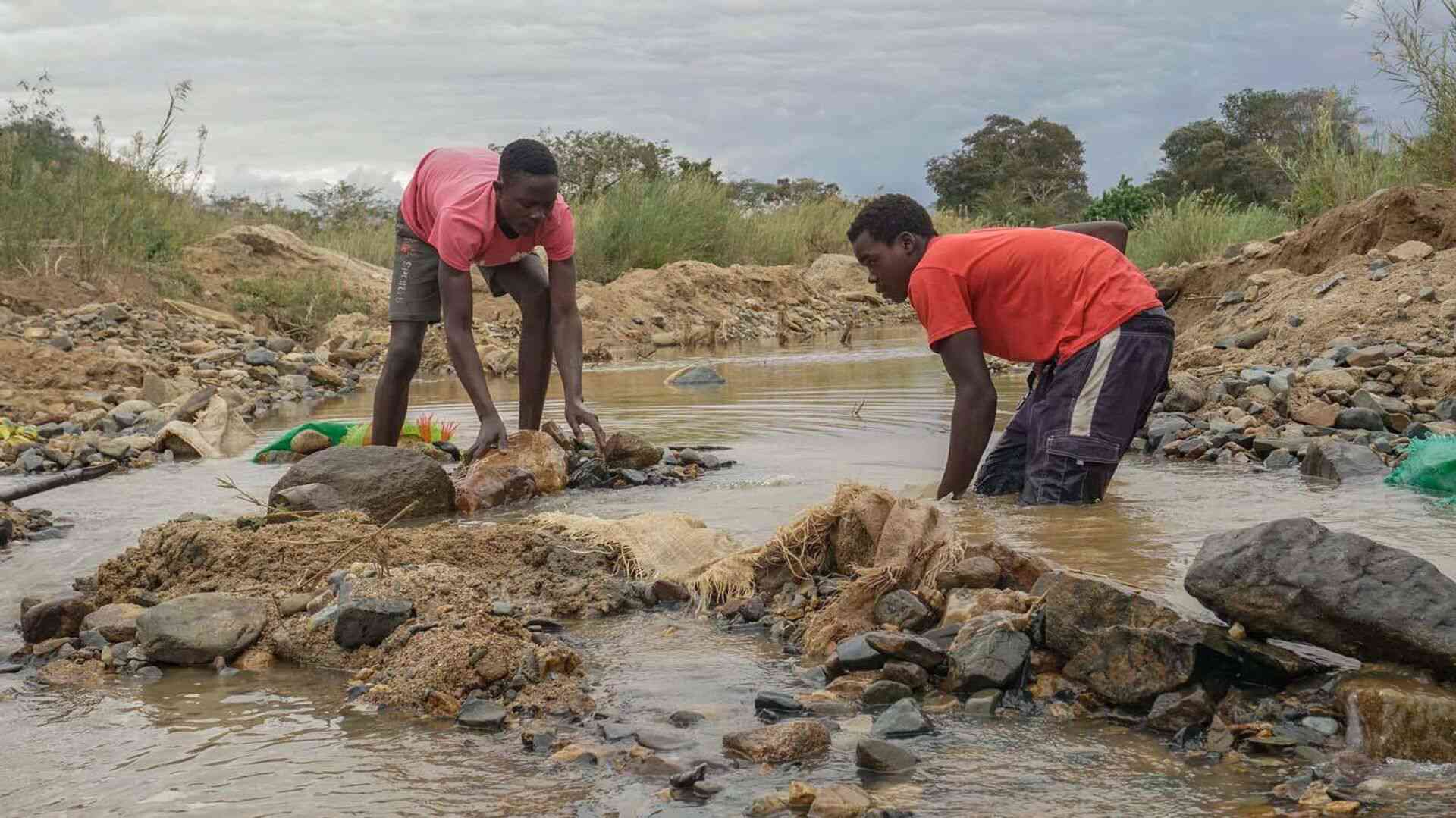
CLIMATE change poses a multitude of challenges globally, affecting various aspects of life, including health, food security, and economic stability.
Among these challenges, one of the more insidious and often overlooked consequences is the impact on gender-based violence (GBV).
This instalment is a two-part series exploring the intricate relationship between climate change and GBV, highlighting the mechanisms through which climate change exacerbates existing vulnerabilities and creates new forms of violence against women and marginalised groups.
Understanding GBV
Gender-based violence refers to harmful acts directed at individuals based on their gender, often rooted in power inequalities. It encompasses a range of abuses, including physical, sexual, emotional, and economic violence.
Women and girls are disproportionately affected by GBV, particularly in times of crisis. Factors such as socioeconomic status, cultural norms, and legal frameworks influence the prevalence and forms of GBV.
Increased displacement, migration
Climate change drives environmental disasters — including hurricanes, floods, and droughts — that displace communities, often forcing people to flee their homes in search of safety and stability.
- Ngozi Mine’s young mothers suffering in silence
- Ngozi Mine’s young mothers suffering in silence
- Village Rhapsody: Engage men to end gender-based violence
- Chics’ Galaxy: Takawira fights in the girl child’s corner
Keep Reading
This displacement frequently results in overcrowded living conditions, such as refugee camps or temporary settlements, where the risk of gender-based violence (GBV) escalates dramatically. In these environments, existing vulnerabilities are magnified, and women and girls face heightened threats of sexual violence, exploitation, and trafficking.
In refugee camps, the lack of privacy and inadequate security measures create opportunities for perpetrators to commit acts of violence without fear of accountability. Women may be forced to travel long distances for basic necessities like food and water, exposing them to potential assaults.
Additionally, the breakdown of social structures and support systems due to displacement can leave women without resources or protection, making them more susceptible to exploitation.
Moreover, economic instability in these settings can push women and girls into transactional sex as a means of survival, further increasing their vulnerability to trafficking and coercion.
The intersection of climate change, displacement, and GBV necessitates urgent attention from humanitarian organisations and policymakers to implement protective measures, ensuring the safety and dignity of displaced women and girls in the face of climate-induced crises.
Resource scarcity
Climate change significantly exacerbates resource scarcity, particularly concerning water, food, and arable land, creating heightened tensions within communities already grappling with limited resources.
As environmental conditions worsen, competition for these essential resources intensifies, often leading to conflicts that disproportionately affect women. In many societies, women are primarily responsible for gathering water and food for their families.
As resources dwindle, they face increased risks of violence from male counterparts or community members who may view them as competitors or scapegoats in the struggle for survival.
This scarcity not only heightens the potential for external conflict but also exacerbates domestic tensions. As men confront their inability to fulfil traditional provider roles due to diminishing resources and economic stress, frustration and anger may manifest as domestic violence. Women often bear the brunt of this violence, facing abuse in an already precarious situation.
Moreover, the fear of violence can restrict women's mobility, limiting their access to vital resources and further entrenching their vulnerability. Addressing the nexus of resource scarcity and gender-based violence is essential for fostering community resilience.
Initiatives that promote equitable resource management, empower women, and provide support systems can help mitigate these risks and promote gender equality in the face of climate change.
Economic instability
Economic instability driven by climate change poses significant challenges, especially in agriculture-dependent communities where livelihoods are intricately tied to environmental conditions.
As extreme weather events, such as droughts and floods, become more frequent and severe, crop yields decline, leading to food insecurity and loss of income. This economic strain disproportionately affects women, who often play key roles in farming and household management. With diminished resources, families may struggle to meet basic needs, pushing women and children into vulnerable positions.
The resulting economic stress can exacerbate existing inequalities, leaving women at a heightened risk of exploitation and violence. As financial pressures mount, traditional gender roles may be disrupted, leading to increased tension within households.
Economic hardships can fuel domestic violence, as men may react with anger and frustration to their inability to provide for their families. These dynamics create a vicious cycle where women are not only economically marginalised but also face greater risks of physical and emotional abuse.
Moreover, the loss of livelihoods can force women into precarious work situations or exploitative labour markets, further diminishing their autonomy and security. Addressing these interconnected issues requires comprehensive strategies that encompass economic resilience, gender equity, and support systems to protect vulnerable populations in the face of climate change.
Health impact
Climate change significantly impacts public health, leading to the spread of infectious diseases, respiratory issues from air pollution, and mental health challenges. Women, especially those who are pregnant or caregivers, bear a disproportionate burden of these health crises.
Rising temperatures and shifting weather patterns can facilitate the spread of vector-borne diseases, such as malaria and dengue fever, which can have severe implications for maternal and child health.
Pregnant women may experience increased complications, which not only affect their well-being but also that of their unborn children. Moreover, the stress and trauma associated with climate-related events, such as natural disasters or food scarcity, can exacerbate mental health issues. This heightened stress can manifest in violent behaviours, as individuals may struggle to cope with their circumstances. Women, already vulnerable due to societal norms and economic disparities, may find themselves at an increased risk of gender-based violence (GBV) during health crises.
The intersection of health impacts and GBV creates a dangerous cycle; health issues can lead to violence, and violence can further deteriorate health.
Addressing these challenges requires integrated approaches that prioritise women's health, mental well-being, and safety, ensuring that they receive adequate support and resources during climate-induced crises.
Social and cultural norms
Climate change can intensify existing social inequalities and cultural norms that perpetuate gender-based violence (GBV). In many societies, women are often scapegoated during climate-related disasters, with beliefs emerging that attribute responsibility for environmental degradation or misfortune to them.
This stigmatisation can lead to increased violence against women, as they become targets for misplaced anger and frustration from their communities.
Furthermore, as climate change exacerbates resource scarcity and economic instability, traditional gender norms may become more entrenched. In times of crisis, societies often revert to rigid patriarchal structures, reinforcing male dominance and female subservience.
These dynamics can manifest in heightened control over women’s mobility, decision-making, and access to resources, effectively diminishing their agency and rights. As stressors from climate change mount, communities may cling to traditional roles and expectations, further marginalising women and restricting their participation in recovery and adaptation efforts.
This not only hinders women’s empowerment but also limits the effectiveness of community responses to climate challenges. Addressing GBV in the context of climate change requires a critical examination of social norms and a concerted effort to promote gender equity and resilience, ensuring that women are active participants in both climate action and community rebuilding.
Case studies and evidence
Numerous studies underscore the correlation between climate change and increased gender-based violence (GBV), particularly in regions vulnerable to natural disasters. Research from countries like Bangladesh and the Philippines illustrates how the aftermath of such disasters often leads to spikes in domestic violence and sexual assault.
In these contexts, the breakdown of social order, compounded by economic strain, significantly heightens women's vulnerability.
After natural disasters, many women report feeling less safe, as communal support systems erode and economic pressures mount, pushing families into crisis.
In Bangladesh, for instance, studies have shown that cyclones and flooding lead to increased domestic violence as families face stress from loss of property and livelihoods. Women often become targets for frustration and anger within the household, leading to higher rates of abuse.
Similarly, in the Philippines, following typhoons, reports indicate a surge in violence against women as communities struggle to rebuild and maintain stability.
Research from African countries also highlights similar trends. In South Sudan, for example, the impact of climate change has exacerbated conflicts over resources, leading to increased violence, particularly against women.
A study from the International Rescue Committee found that during periods of drought and food insecurity, reports of GBV significantly rose, as women faced increased risks when seeking food and water.
In Kenya, the intersection of climate change and GBV has been documented in contexts where changing rainfall patterns affect agricultural productivity. Women, often responsible for fetching water and managing households, face heightened risks of violence when they are compelled to travel longer distances for resources.
Reports indicate that these pressures can lead to increased sexual assault and exploitation.
Overall, the evidence across various regions illustrates that climate change not only impacts physical safety and livelihoods but also significantly exacerbates gender-based violence, highlighting the urgent need for integrated approaches that address both climate resilience and gender equality.
Moreover, the Intergovernmental Panel on Climate Change (IPCC) recognises that climate-related impacts are poised to amplify existing inequalities, particularly gender disparities. Women in developing countries are especially vulnerable to the adverse effects of climate change due to a confluence of factors that restrict their access to essential resources, decision-making power, and economic opportunities.
In many regions, women are often tasked with managing household resources, such as water and food, yet they lack control over land and property rights. This limitation hinders their ability to adapt to climate change impacts, such as droughts or floods, which can devastate crops and livelihoods.
Furthermore, women's participation in decision-making processes related to climate adaptation and disaster response is frequently minimal, preventing their unique needs and perspectives from being addressed.
Economic opportunities for women are also constrained, limiting their ability to invest in adaptive strategies or diversify income sources. This economic vulnerability not only affects their livelihoods but also increases their susceptibility to gender-based violence in times of crisis.
As climate change continues to unfold, it is crucial to implement gender-sensitive policies and programmes that enhance women's access to resources, promote their active participation in decision-making, and empower them to build resilience against climate impacts, thereby fostering greater equity and sustainability.
Conclusion
The implications of climate change on gender-based violence are profound and multifaceted. As the climate crisis intensifies, it is imperative to recognise and address the ways in which climate change exacerbates existing vulnerabilities to GBV.
Understanding this relationship is crucial for developing effective interventions that safeguard the rights and well-being of women and marginalised groups.
As climate-related disasters become more frequent and severe, the need for a gender-responsive approach in policy-making and implementation becomes increasingly urgent. By integrating gender considerations into climate change strategies, we can not only enhance the resilience of communities but also work towards dismantling the systemic inequalities that fuel GBV.
Ndoro-Mkombachoto is a former academic and banker. She has consulted widely in strategy, entrepreneurship and private sector development for organisations that include Seed Co Africa, Hwange Colliery, RBZ/CGC, Standard Bank of South Africa, Home Loans, IFC/World Bank, UNDP, USAid, Danida, Cida, Kellogg Foundation, among others, as a writer, property investor, developer and manager. — @HeartfeltwithGloria/ +263 772 236 341.










